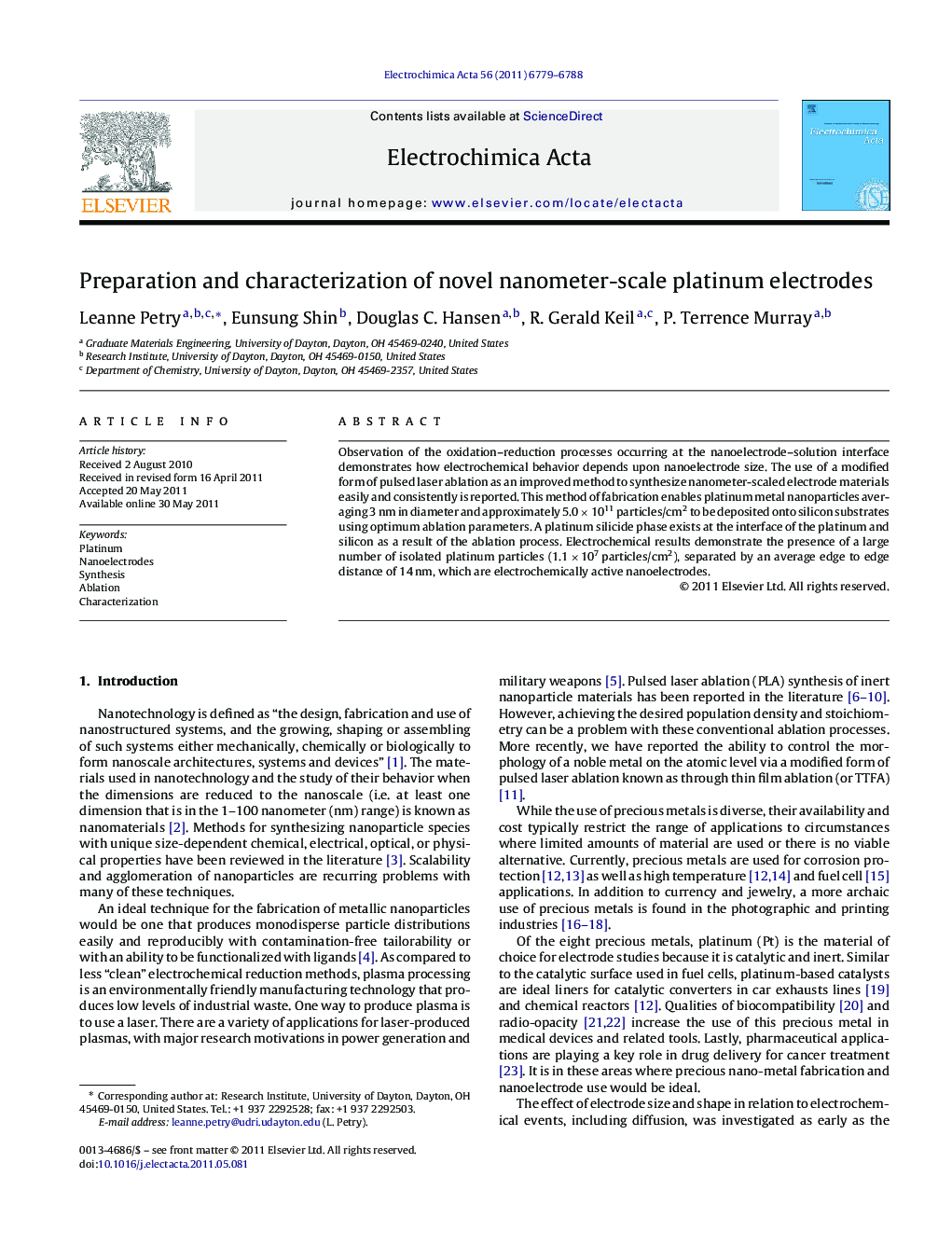| Article ID | Journal | Published Year | Pages | File Type |
|---|---|---|---|---|
| 189557 | Electrochimica Acta | 2011 | 10 Pages |
Observation of the oxidation–reduction processes occurring at the nanoelectrode–solution interface demonstrates how electrochemical behavior depends upon nanoelectrode size. The use of a modified form of pulsed laser ablation as an improved method to synthesize nanometer-scaled electrode materials easily and consistently is reported. This method of fabrication enables platinum metal nanoparticles averaging 3 nm in diameter and approximately 5.0 × 1011 particles/cm2 to be deposited onto silicon substrates using optimum ablation parameters. A platinum silicide phase exists at the interface of the platinum and silicon as a result of the ablation process. Electrochemical results demonstrate the presence of a large number of isolated platinum particles (1.1 × 107 particles/cm2), separated by an average edge to edge distance of 14 nm, which are electrochemically active nanoelectrodes.
► Fabrication of Pt nanoparticles using the method of through thin film ablation results in an isolated array of nanoelectrodes. ► Characterization of the array is consistent for isolated nanoelectrodes where the diffusional profiles do not overlap. ► Enhancements of the limits of detection as an electrochemical sensor are amplified due to the large number of isolated nanoelectrodes in the array.
